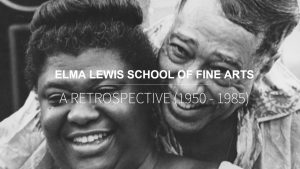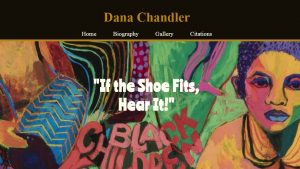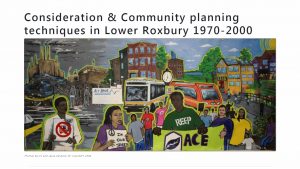Last semester, students in Professor Kara Braciale’s “5D Experience/Drawing” class did a deep dive in the University’s archival collections, specifically exploring artifacts, stories, and documents related to the culture and history of the neighborhoods surrounding Northeastern University.
Students began their introduction to these archival materials by listening to oral histories from the Lower Roxbury Black History Project. After listening to the oral histories, each student was asked to identify an area of interest — a person, place, a theme — on which they would conduct further research and eventually develop a digital exhibition.
Connecting students to these archival collections provided them an opportunity to engage with varied primary sources and historical objects, to connect with their larger Boston community through place-based learning, and to create projects that are meaningful and accessible to both the Northeastern community and its neighbors.
I had a conversation with Kara Braciale about her experience with collaborating with the library and archives for this project, and about her decision to use Northeastern’s archival collections as a central resource in her course.
Can you give us a little background on your course and about how this project came to be?
5D Fundamentals Experience/Drawing is a foundational course in Art + Design that considers experience, interaction, behavior and context through a lens of cultural production. For the past few semesters I have incorporated Service-Learning – the classes do project-based work that fills a need for our community partner (in this case Northeastern Crossing) while reinforcing connections to our course content. In my discussions with Derek Lumpkins (Director of Neighborhood Partnerships and Programs) and Marissa Luse (Campus Engagement Coordinator) at Northeastern Crossing, they were interested in projects relating to the Lower Roxbury Black History Project. Since the Lower Roxbury Black History Project is an online archive and the final project of 5D is screen-based, the idea of student designed websites connected to that archive coalesced from our conversations.

Elma Lewis School of Fine Arts: A Retrospective (1950-1985) by Samantha Borri, E/AMD’19, and Melina Paulli, AMD’19

Dana Chandler by Kevin Cannon and Greg Hackel-Johnson, AMD’19

Consideration & Community Planning Techniques in Lower Roxbury 1970-2000 by Ralph Perricelli, AMD’18
Explore a few of the students’ website projects below:
Consideration & Community Planning Techniques in Lower Roxbury 1970-2000 by Ralph Perricelli, AMD’18
Dana Chandler by Kevin Cannon and Greg Hackel-Johnson, AMD’19
Elma Lewis School of Fine Arts: A Retrospective (1950-1985) by Samantha Borri, E/AMD’19, and Melina Paulli, AMD’19
“WE SHALL NOT BE MOVED FROM PARCEL 19”: The Story of Villa Victoria by Nick Salerno, E’18
Interested in integrating Northeastern’s archives and special collections into your course? Fill out the library session form to request an archives workshop for your students or contact your subject librarian to discuss how to build an assignment based on the Archive’s primary source materials.


